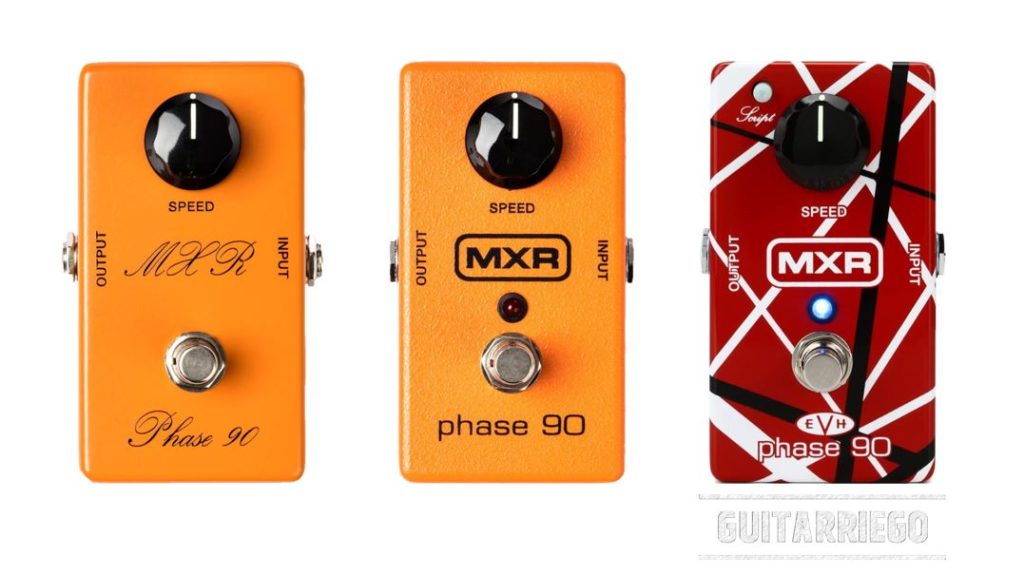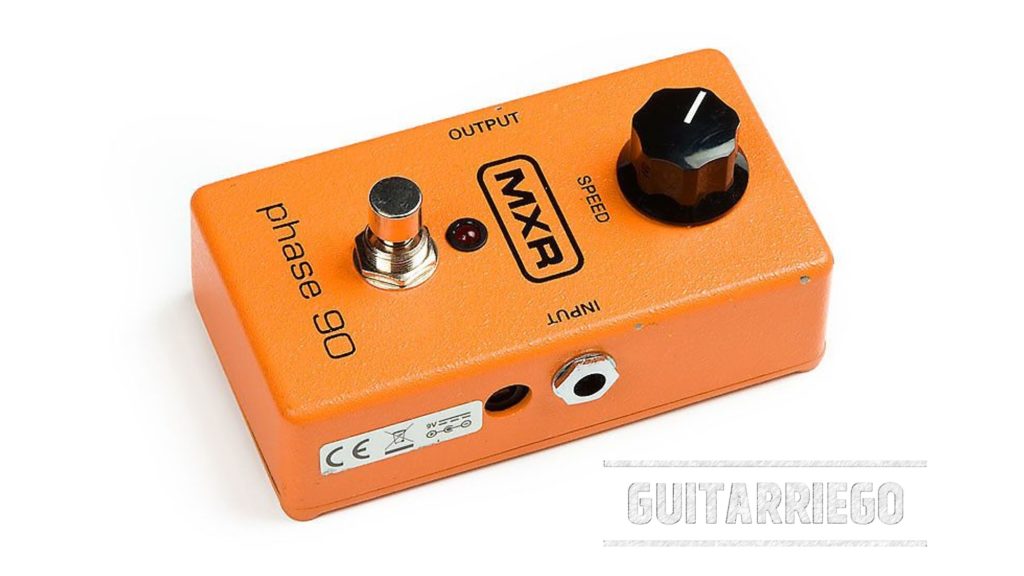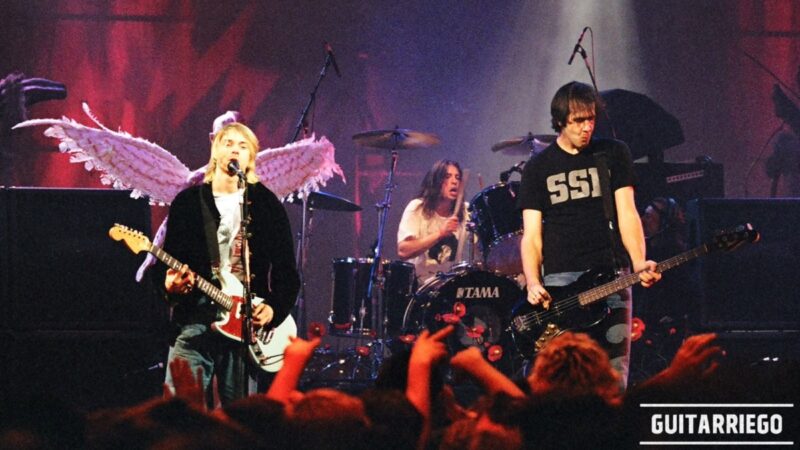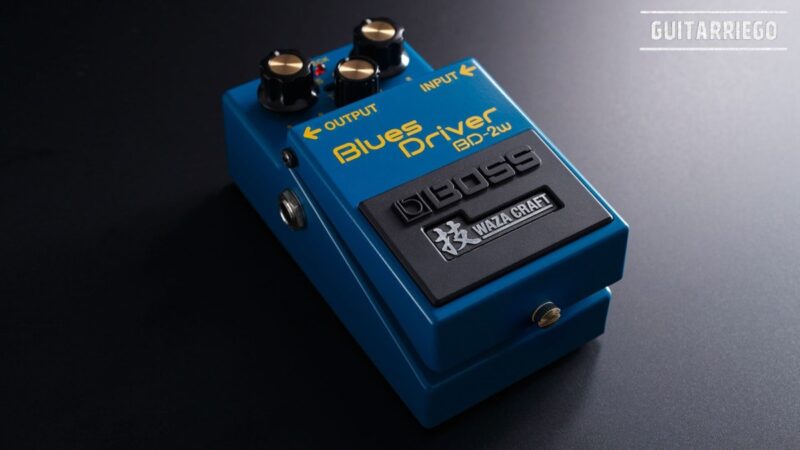MXR Phase 90 – Classic Phaser Effect Pedal

MXR Phase 90 is one of the considered classic pedals, this vintage circuit Phaser, has been used by great guitarists like Eddie Van Halen.
MXR Phase 90: A classic from the 70’s to the present
Since its release between 1972 and 1974, the pedal has been widely accepted by guitarists. The Phase 90 is a pedal that can be found on any type of musician’s pedal board. It covers all kinds of musical genres and styles, from jazz, funk, or soul to rock, metal, pop, and we could go on.
Some guitarists who used the MXR Phase 90
The MXR Phase 90 has been a very popular effect pedal. Used by guitarists of the likes of David Gilmour of Pink Floyd for the albums Wish You Were Here and The Wall. Another musician who used it was Steve Jones of the Sex Pistols in the iconic British punk anthem Anarchy in the U.K.
Also the virtuoso artist Eddie Van Halen, has used in the first two albums of the band, standing out on the instrumental Eruption.In addition, another great exponent of the users was Johnny Winter, American blues and rock guitarist.

What is a phaser?
Phaser is a digital effect that is achieved through audio processing that doubles the signal, applying a slight delay to it. Both signals together, the original and delayed, produce so-called modulation phasing between one signal and the other. The difference between signals is not random, but is based on an exponential algorithm, hence its regular cancellation.
Thus, the heart of a phaser or phase shifter is a circuit that divides the incoming signal in two and reverses the phase of a filament by 180 degrees. A low-frequency oscillator is then applied to the signals, causing them to intersect at varying points along the frequency spectrum.
When the two signals meet, they are 180 degrees out of phase with each other and cancel each other, creating a “notch” or “notch” in frequency. As the oscillator sweeps those notches up and down in the audio spectrum, it produces the characteristic effect these pedals are famous for.
This is the technical explanation, but let’s put into words the effect achieved according to our ears. Manipulating the signal and changing or adjusting the phase gives the signal an incredibly three-dimensional swirling sound.
What is the difference between a phaser and a flanger?
The phaser effect is a flanger-like sound. But the main difference with the flanger effect is that the phaser phase cancellations are exponential, that is, 1, 2, 4, 8, 16, and so on; instead, those of the flanger are sequential, that is, 1, 2, 3, 4, 5 and so on.
Jim Dunlop’s MXR Phase 90 Demo Video
MXR Phase 90, the king of phaser effect pedals
Other phaser builders were Maestro and Electro-Harmonix, who were among those who popularized this effect. But without a doubt the most beloved phaser of its time was the MXR Phase 90.
The Phase 90, sounding more dramatic than the Phase 45, and cheaper and simpler than the two-button Phase 100, was the sweet spot and was a resounding success as a result.
As we already said Eddie Van Halen colored his tones throughout Van Halen I, David Gilmour used it to add sparkle to Pink Floyd’s “Shine on You Crazy Diamond”, Mick Jones used it on Clash’s “Lost in the Supermarket”, just for name some examples.
Phase 90 Specifications
Designed by Keith Barr in 1972, the Phase 90 was MXR’s first effect and is a four-stage phaser. Since it has four independent stages in which the phase of the signal is inverted, which results in two “notches” of modulated frequency.
The speed at which these “notches” move up and down in the frequency spectrum is controlled by the Phase 90’s “Speed” knob.
Because the original MXR pedals were not true-bypass, the input signal passed through the pedal’s buffer stage even when the effect was turned off, causing it to suffer a loss of brightness or tone.
Evolution of MXR Phase 90
Early MXR pedals had their names and the MXR logo screen-printed on their fronts in a “Script” font. In 1976, all of the pedals in the line received more modern capital letter logos surrounded by a black box, called a “block.” With the change in aesthetics, the Phase 90 circuit was also modified. These two versions are known by the Script or Script-logo and the Block or Block-logo.

In 1984, due to high competition MXR closed. But three years later, in 1987, Jim Dunlop acquired the company. Since then, Dunlop has released several reissue versions of the Phase 90.
New versions of the pedal:
- CSP-026 Handwired 1974 Vintage Phase 90: This is supposedly a true copy of the first circuit from the ’70s.
- CSP-101SL Script Phase 90 – LED: It is a variation of the previous one that includes modern specifications. It has LED light power indicator and input for external power source.
- EVH-90 Phase 90: It is Eddie Van Halen’s signature model. It has two sound modes: a default block mode and a “script” mode. These modes are selected by means of a button on the side of the speed knob. The aesthetic design is based on the mythical Frankenstrat guitar.
- CSP-001 Variphase: It is a “Custom Shop” series. It’s an expression pedal-operated Phase 90, in an orange Wah-wah-like housing.
- CSP-099 Phase 99. Also from the “Custom Shop” series, it has two circuits in a single pedal, with various configuration possibilities.
- M-290 Phase 95: It is a model that includes both the Phase 90 and the Phase 45. It comes in a micro pedal format. You have the possibility to select between both models. In addition, it also has the script and block versions, selectable by means of buttons on the side of the Speed / speed control.
Of course, as in everything, the most fanatics and purists consider that the true and unique classic MXR Phase 90, is the original “script-logo” from the 70’s.
For more information, visit MXR web site.
Related Post: Best 12 tips and tricks to setup your pedalboard.
You can share opinions or also chat about this and more with other musicians in our comments section.






